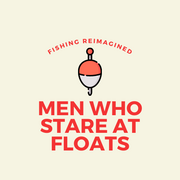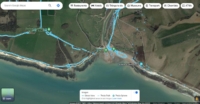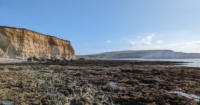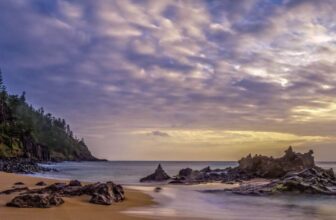As one of the East Coast’s premier fishing destinations, Norfolk has been known to throw up some stunning fish over the years. Renowned as a cod fishing hotspot, Norfolk’s shallow, shingle beaches, nature reserves and enormous population of seals suggest that baitfish are indeed prevalent.
Famed for its narrow, shallow shingle beaches and pier fishing, Norfolk has a real variety of sea fishing marks including the renowned Cromer Pier and the area around The Wash. With a host of shore fishing marks, from shallow, sandy flats great for bass and shallow, shingle beaches that still throw up the occasional cod or codling (although cod stocks have decreased dramatically over the last decade).
But don’t let that put you off. Bass, mackerel, rays, pouting and the classic British seafish are still there to be found on the East Coast and below are some excellent places to start. If you’re taken with the idea, then check out some of the best fishing holidays Norfolk has to offer.
How to Find a Fishing Spot
What’s on this page?
The Wash
The Wash is the largest estuary system in the United Kingdom that bridges the gap between Lincolnshire and Norfolk and opens out into the North Sea. This shallow, 20km wide and 30km long bay is rich in bountiful habitats like tidal creeks, salt marshes, lagoons, shingle banks and mud flats. The eastern coast of this Norfolk Coast Area of Outstanding Natural Beauty lies entirely within Norfolk and extends from a point just north of Hunstanton to the mouth of the River Great Ouse at King’s Lynn in the south.
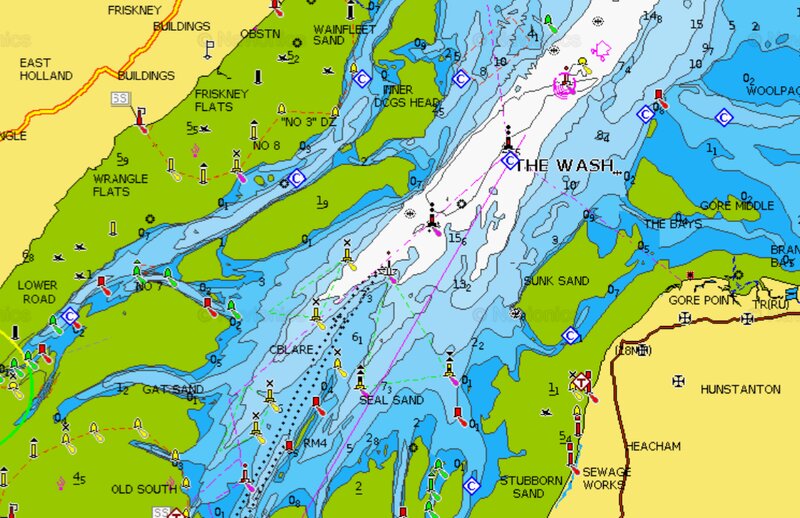
This wide-open coastal space teems with life below the surface too. Abundant in food, it is an important nursery area for cod, skate and bass and the variety of environments, estuaries, underwater features and varying water temperatures make for some superb fishing spots. The best marks tend to be around the beaches of Hunstanton and Snetiisham two hours on either side of high tide.
The Wash is home to more common seals than anywhere else in the UK and is a winter feeding ground for over 300,000 migratory or visiting water birds, which is also more than anywhere else in the UK. Such is the abundance of shellfish, crabs and baitfish, it’s estimated two million birds a year use The Wash.
Blakeney Point
Blakeney Point is a four-mile shingle ridge and dune that’s noted for its diverse habitats and wildlife including salt marshes, mudflats, and grazing marsh. As one of Norfolk’s most iconic landmarks, the reserve is part of both an Area of Outstanding Natural Beauty (AONB) and a World Biosphere Reserve and much like The Wash, Blakeney Point is home to Europe’s largest grey seal colony with over 4,000 seal pups born each winter. has been known to throw up some superb fish.
The area around Blakeney Point has been known to throw up some superb fish but is not necessarily the most accessible. Thanks to the powerful surf, there are some very good rays that have been caught here over the years and Long Hills and Blakeney Pit are some of the best inshore marks, whilst the shingle beach offers some good beach fishing, with bass not uncommon in the summer.
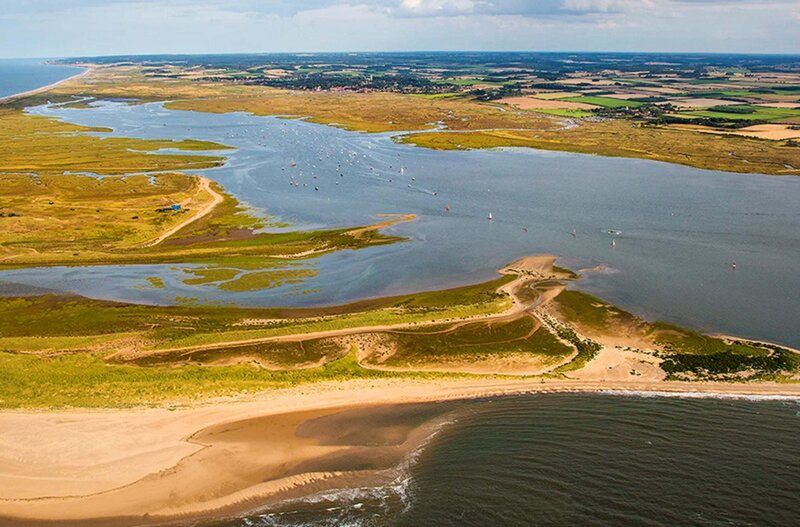
If you decide to fish the area around Blakeney Point and the long shingle ridge, be very wary of Norfolk tide times and being cut off as the water comes in quickly. Some areas are only accessible at low tide and you can be stranded if you’re not careful. If you can charter a boat or hitch a ride, then the area is much more accessible.
Cley
Just east of Blakeney and west of Salthouse and the long shingle beach lies Cley-Next-the-Sea and – if you’re travelling down from the north – the start of Norfolk’s shallow, shingle beaches and its open sea fishing. These shingle beaches are incredibly easy to access, which is definitely part of the appeal. Cley and the surrounding area are particularly busy with fishermen in the summer and autumn months, with smoothhounds, mackerel and bass in the summer and flatfish in the cooler months.
Thanks to the shingle bank cutting in relatively close to the shore, deep water can be accessed by even the most novice of beach anglers. Around 40 yards or so offshore the bank drops off and shore fishing with peelers, ragworms and squid tends to work best. The largely featureless beach has a wreck to the right of the beach access, which can throw up a few surprises too.
When fishing these shallow, shingle beaches it’s worth visiting these areas at low tide so you can understand the underwater topography. Whilst the shingle at Cley isn’t as prominent as others there are some great fish to be had at the bottom of the bank.
Cromer
As one of the most popular fishing destinations on the East Coast, Cromer – particularly Cromer Pier – is always full of fishermen in the late spring through to early autumn. Known for its head of big bass, the pier’s main advantage is it allows you to get out past the surf and cast parallel to the beach without any trouble.
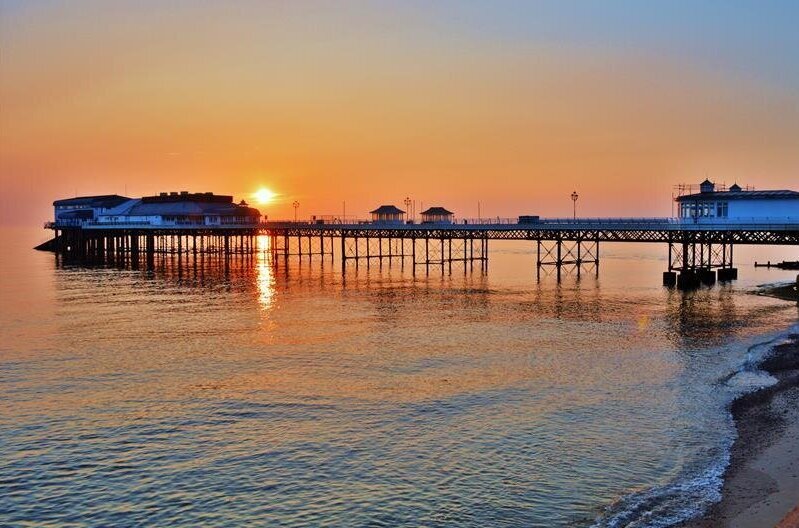
Whilst the pier does have its advantages (easy access, sand-free fishing, getting out past the surf), it can be very busy and the beach on either side can be as productive, particularly for cod, with a little more space to cast from. In the winter months, cod, whiting and flatties are the most common catches. In the summer, bass, pouting and mackerel are the most common catches.
As ever, two to three hours on either side of high tide tends to be the best time to fish. There’s a patch of rough ground directly in front of the pier out to sea that can be a little tricky, particularly if you’re bait fishing.
Great Yarmouth
Great Yarmouth is a popular fishing destination on the east coast of England thanks to its variety of destinations. With a long, sandy beach, Britannia Pier and Gorleston Harbour, the marks are numerous and varied. Whilst you can’t fish off the pier itself (there’s not much space and it’s very touristy), you can fish around the legs of the pier when the tide is right which has been known to throw up some decent fish. Great Yarmouth Beach gets deep relatively quickly and – a couple of hours on either side of high tide – you can find big fish no more than 20m out to sea.
To the south of Great Yarmouth, the harbour at Gorleston is free for anglers and you can fish inside the wall or fish off the pier at the mouth of the harbour for codling, whiting, flounder and eels in the winter and big bass in the warmer summer months. For the more patient fishermen, mullet can be found in the harbour when the seas are calm.
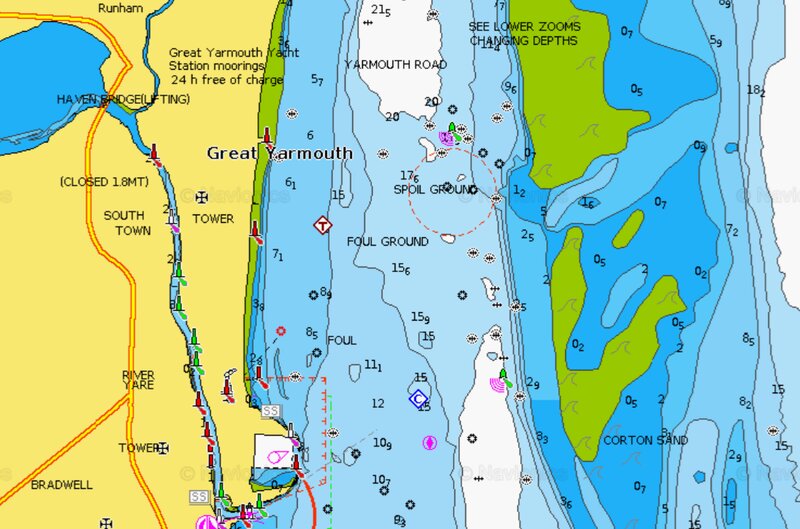
The harbour at Gorleston can be quite snaggy and is best fished with either a rotten bottom rig or with lures should you wish.
Holkham Bay and Wells-Next-the-Sea
Wells-Next-the-Sea and Holkham Bay are wide, open, sandy beaches that offer a decent chance of some bass, flounder and mullet in calm conditions in small bays and inlets in the area. Whilst the beach fishing is easily accessible, it’s very shallow around this area and requires some pretty serious beachcasting gear to get your bait out there and the beaches can only really be fished effectively for an hour or two on either side of high tide.
There’s a harbour in Wells-Next-the-Sea that’s used by a small fishing fleet and by visiting commercial vessels, where you can charter a fishing vessel. The ‘Wells Run’ is a section of water that runs out to sea from the harbour for a couple of miles past the lifeboat station. This is a fantastic stretch of water to fish, particularly if you like covering ground with some of the best sea fishing lures and spinners.
At high tide, the sands that cover the area heading out to sea from Wells are covered and can be a great spot to fish for bass and even the occasional sea trout. Thanks to the tidal range, the beaches around Wells and Holkham are rarely bait-fished
The stretch of coastline from Scolt Head to Blakeney is very dangerous thanks to the strong, fast-moving tides and high tidal range. If you’re not careful you can get cut off when you cross ‘The Run’ at Wells, so just be aware of where and when you’re fishing.
Sheringham
Sheringham is a flat, shingle beach that runs parallel to the Norfolk Coast Path from Weybourne Cliffs to West Runton where the beaches are a little sandier. This shingle stretch throws up a few bass if you fish around the features (largely the groynes and edges of the cliffs) and try to find some rougher ground that can be fished for a few hours on either side of high tide.
If you head down towards the beach at West Runton, just east of Sheringham, the typically featureless sandy beaches become much more rocky and can be a bit of a hotspot for bass fishing at high tide. As the bass hunt in and around the rocks for peeler crabs and baitfish, it is a relatively unknown, but interesting spot.
As these beaches can get very touristy in the summer months, fishing at dawn, dusk or outside of the peak season is probably your best bet. We suggest heading to the beach at low tide and finding the likely-looking spots.
When looking for exposed areas of rock that look like likely feeding marks for bass, Robin Friend – an exposed rocky mark to the northwest of the lifeboat station at Sheringham – is well worth a look.
The 10 Best Sea Fishing Spots in Sussex
Trimingham, Mundesley and Walcott
Whilst we wouldn’t normally group marks together, the open sandy beaches that stretch south of Cromer from Trimngham to Walcott are largely featureless, snag-free fishing marks. Like many of the beaches on the East Coast, the tide takes the water out a long way which can make fishing from the shore tricky outside of two hours on either side of high tide.
Typically these flatter beaches fish better for flatties, cod, and whiting in the cooler months with the occasional bass and mackerel in the warmer months. However, thanks to the largely featureless nature of the beaches, we wouldn’t count on it.
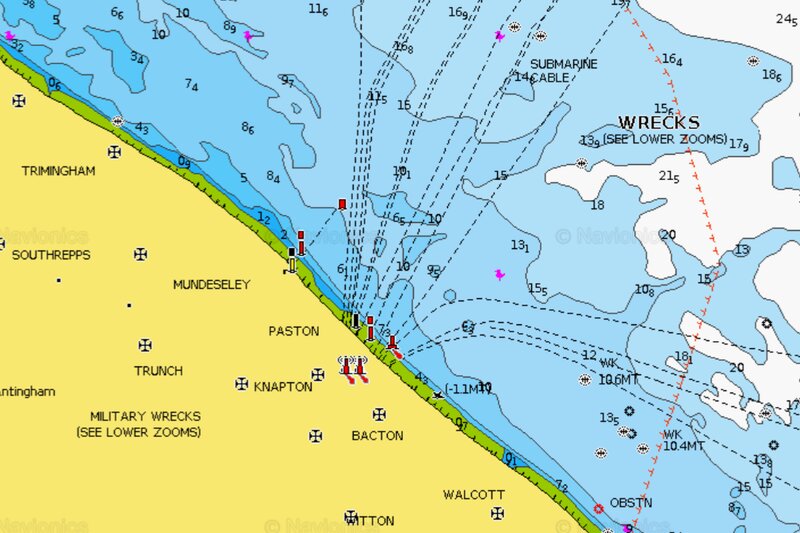
If you have some serious casting capabilities you are in with a chance of some big rays or smooth hounds from the beach.
Harry
Hi, I'm Harry. A keen, albeit exceedingly average fisherman. I've spent the last few years trawling London's waterways with - if I'm being kind - varied success and would love to help you avoid the mistakes I have made.
